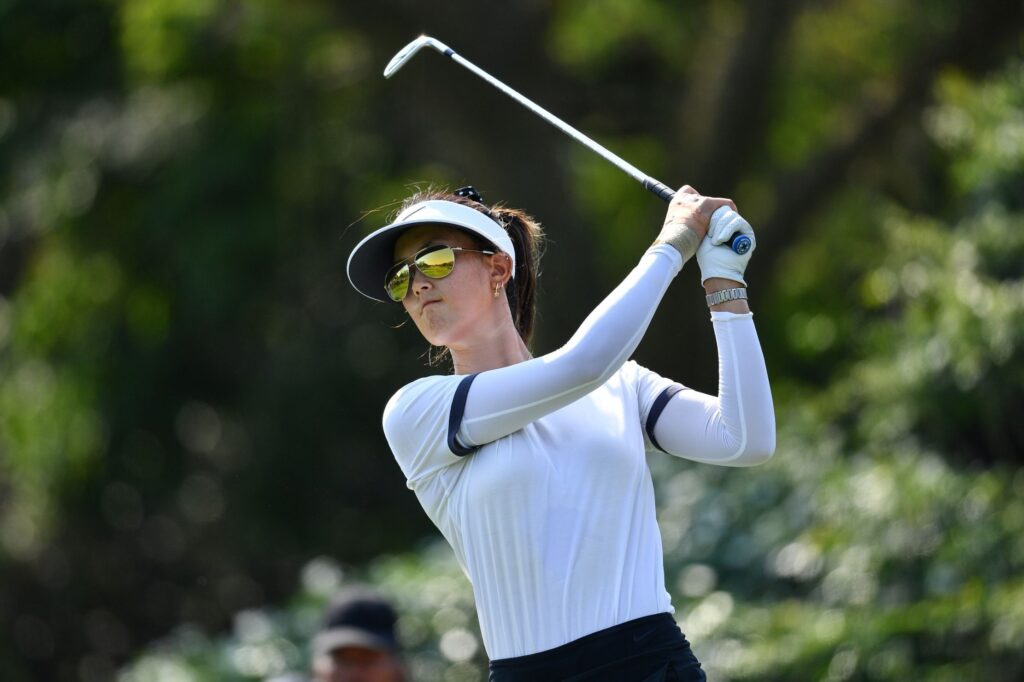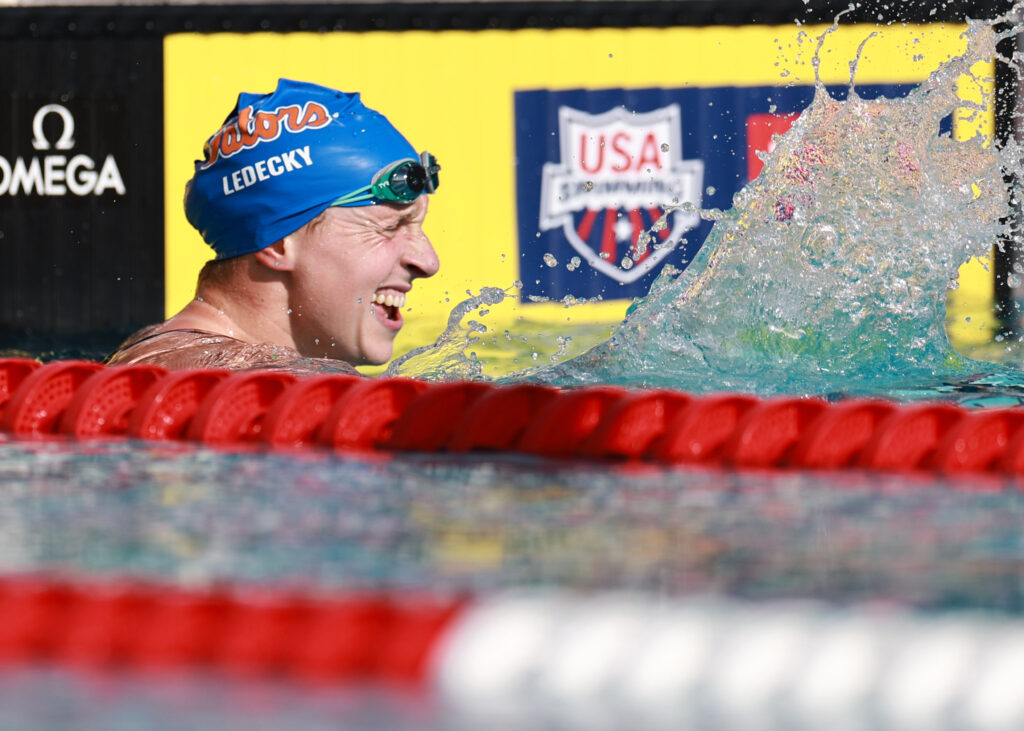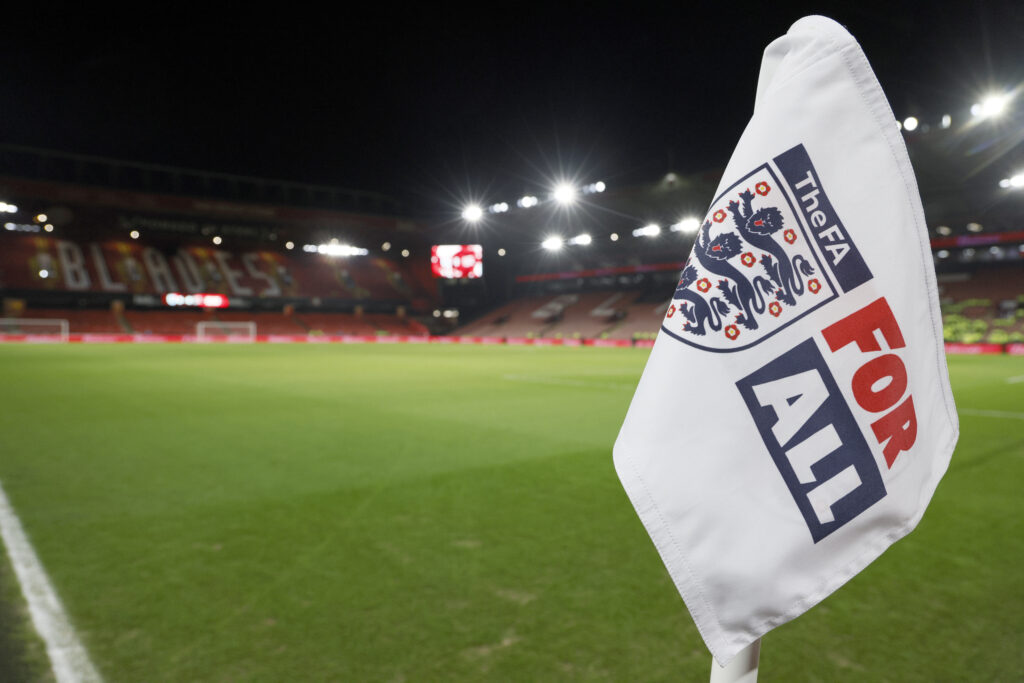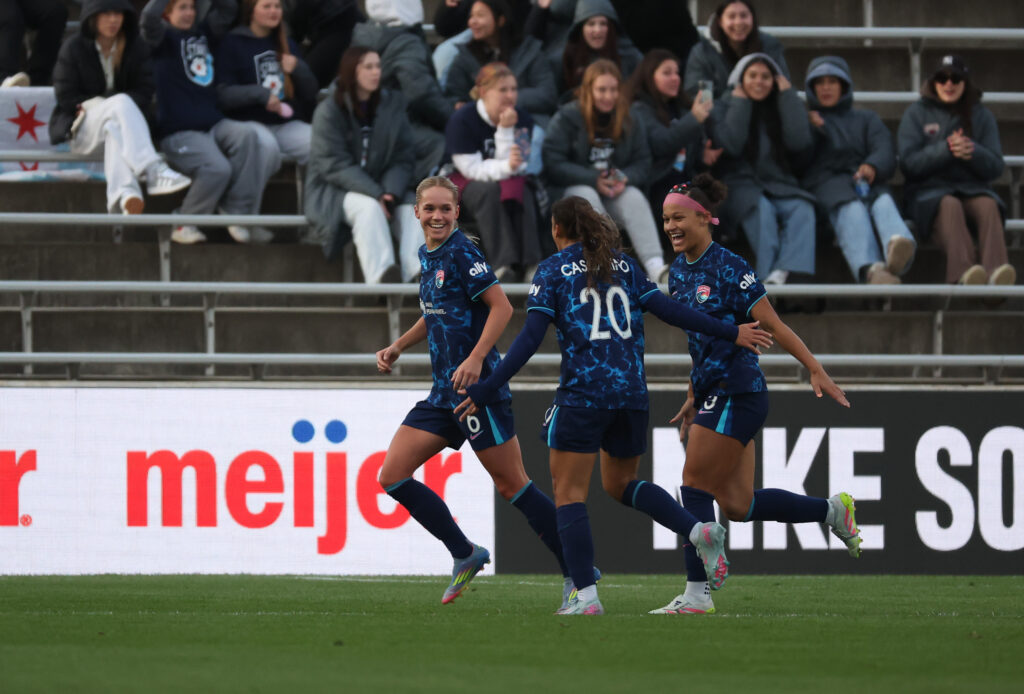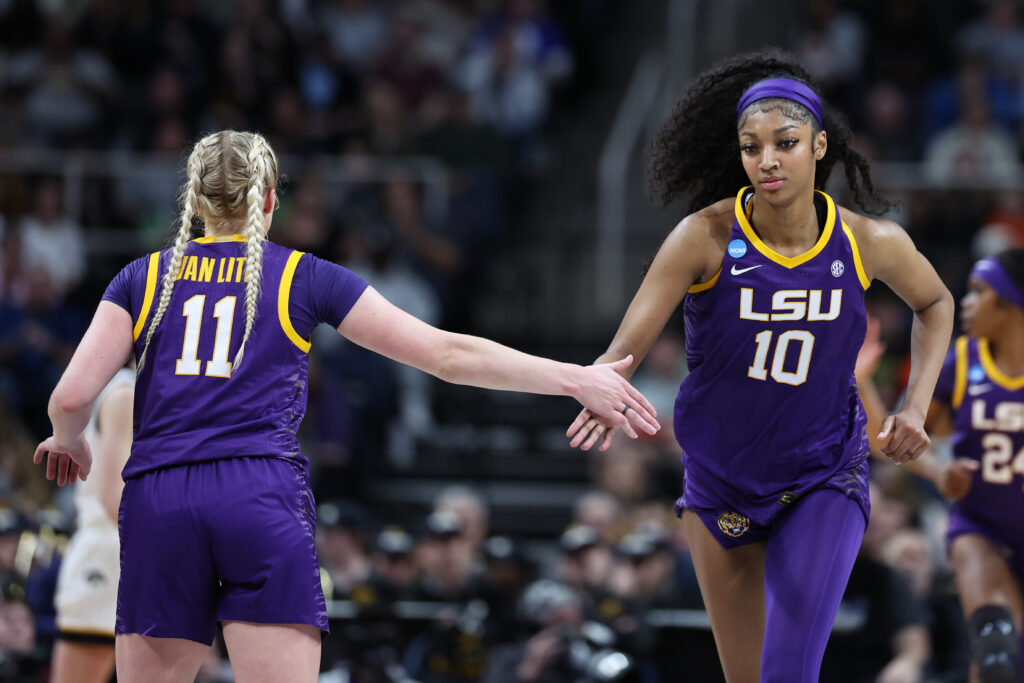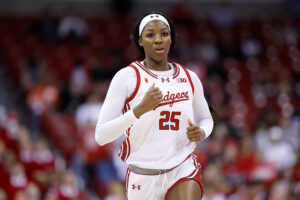Michelle Wie West knew at a very young age that she was going to be a professional athlete. It was never a question of whether she would go pro, it was only a matter of finding the right sport.
In a recent conversation with Kelley O’Hara on the Just Women’s Sports podcast, Wie West laughs when recalling her early process of elimination. She quickly crossed off soccer, basketball, and gymnastics. She loved hitting in tennis but didn’t have the foot speed. She loved batting in baseball but couldn’t catch. Golf ended up a perfect fit, a sport where she could doggedly pursue excellence in what she loved most in all the sports she tried: connecting stick to ball as powerfully and precisely as possible.
Many saw young Michelle Wie as a child prodigy whose parents pushed her into the sporting limelight as early and often as possible, but in reality Wie West has always been an independent thinker. Her own internal barometer of happiness has been her guiding force throughout her career, leaving her largely unfazed by critics and naysayers.
One source of her early confidence was just her sheer physical presence. At age 10 she was 5’7”, 165 lbs. and could hit the ball 275 yards.
“I was an absolute unit,” she laughingly tells O’Hara. “I loved being outside. I was a total tomboy.”
She had no qualms about being the only girl on the basketball court or the only girl on her youth baseball team, even making the all-star team in the latter. By 14 years of age, her unprecedented trajectory in golf was already well underway. She had won enough youth and adult amateur events, and was enough of a media draw, for Sony to offer her a sponsor’s invite to their 2004 PGA tournament in Hawaii.
Wie West tells O’Hara the decision to accept the invite was easy: “My mindset was ok, I played on the boys’ team in baseball. I made the all-star team. All my friends are boys. I was like a super tomboy. So I didn’t feel like that was a really bizarre thing to do.”
In that first PGA event at 14 years old, she missed the cut by one stroke, beating 47 adult men, including seven major winners. She went on to accept several PGA sponsor invites throughout her career, undeterred by critics who wrote them off as undeserved publicity stunts.
Wie West’s entire path to becoming a pro golfer was unconventional. The typical route is to play on your high school team and in junior golf events and then get recruited to a college team and transition to pro tour events. For a youngster with Wie West’s skills, a full college scholarship was all but guaranteed.
But Wie West always made up her own mind about what was best for her, and she decided she could turn pro without sacrificing her educational goals. She was regularly placing high enough to qualify for prize money, but as an amateur she wasn’t allowed to accept the rewards. That didn’t make sense to her, so she decided she would do both: become a professional golfer and still go to her dream school, Stanford University.
“I knew I wanted to go to Stanford. That was not something I was going to give up,” she tells O’Hara, at the time thinking, “I can turn pro and I have good enough grades and maybe a cool enough story that I can get into Stanford.”
So, as a sweet sixteenth birthday gift to herself, she signed contracts with Nike and Sony and officially turned pro. Two years later she was admitted to Stanford University. While many speculated that attending such a rigorous academic school would negatively impact her golf career, Wie West wasn’t concerned.
“I thought that even if it took me away from golf a little bit, it was worth it,” she tells O’Hara. Looking back, she still believes going to Stanford was one of the smartest decisions she’s ever made.
Wie West’s confidence to do things her own way has also been evident on the putting green. After a mid-career slump dropped her to 119th on the LPGA tour in putting average, she came up with a very unconventional new technique. The idea first came to her when she was paired with a much shorter player who was nailing all her putts.
“I’m using my Stanford brain here and I think the scientific reason why she is putting better than me is because her eyes are closer to the golf ball,” she recalls thinking to O’Hara, “If I get closer to the ball… I will start putting better.”
In order to accomplish this, the 6-foot-tall Wie West began leaning over almost 90 degrees in a new, aptly named “tabletop” putting stance.
She even laughed along with those commenting on the peculiar image of her tall frame bent at such an awkward angle. Scientific validity aside, the change was successful for Wie West.
“From that moment on I started feeling really comfortable and that was something that I was searching for,” she explains to O’Hara. She went on to win two LPGA events the following year, including her first Major win at the 2014 U.S. Open.
For someone who was in the national (and international) spotlight at such a young age, the fact that she’s never been all that influenced by public perception is rare and impressive. In making big decisions, Wie West has always maximized for personal happiness by confidently trusting an inner voice that has guided her on a path that’s uniquely her own.
Listen to Michelle Wie West’s full conversation with Kelley O’Hara on the Just Women’s Sports podcast here.
